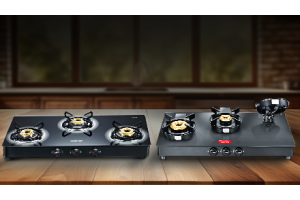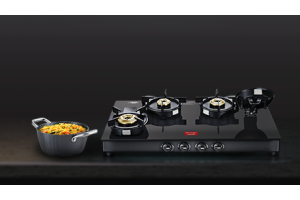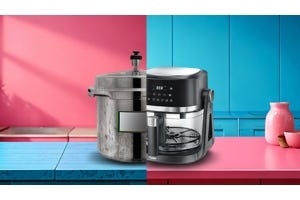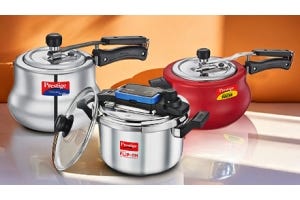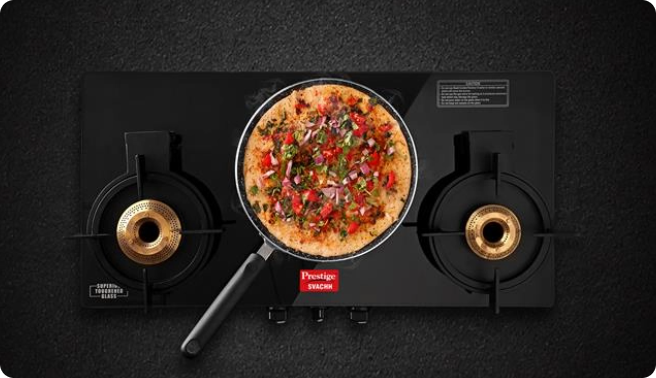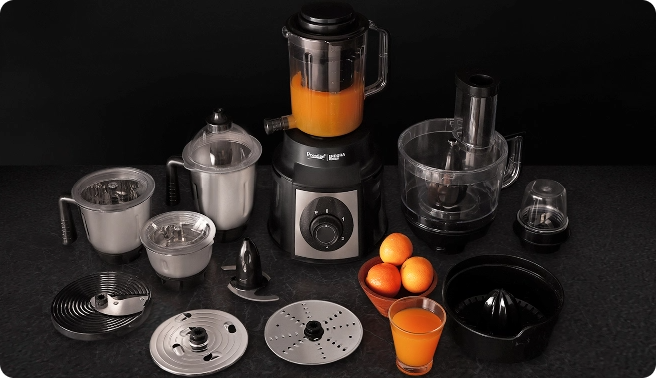Introduction
Your attire speaks about your personality and your outfit is your first impression. Having crease-free outfits for daily wear is often a non-negotiable, and hence investing in a good electric iron is a must for every individual. Over the years, conventional electric irons have technologically evolved to take many forms.
Traditional heavy-weight irons are not suitable for all fabrics. Synthetic and silk fabrics require lightweight irons with proper temperature control. Meanwhile, just heating does not suffice when ironing cotton and linen fabrics; they require a little moisture for a crisp and wrinkle-free look.
Manually sprinkling water on fabrics for ironing is a tedious task, often leaving a watermark on the fabric. Hence, steam irons were introduced to overcome the drawbacks of a dry iron. As the market continues to buzz with various models of electric irons, it must get confusing to choose which one is more suitable for you. Knowing the exact differences between a dry iron and a steam iron can come in handy while deciding which iron to place your final bet on.
Let’s take a look at what these are through the course of this article.
Dry Iron & Its Features
Dry irons are equipped with cords and a giant metal surface to press our clothes straight. These irons have an internal coil that gets heated through the power supply, converting electricity into heat. This heat is transferred to the sole plate for ironing your garments.
Features:
- Heavy metal or non-stick sole plates with a safety plastic handle.
- Steam function is absent.
- Comes in both heavy and lightweight models.
- Has models with and without thermostats.
- Supports an automatic power on/off light indicator that controls the temperature.
- Simple, reliable, and easy to use without having many functions to operate.
- Relatively inexpensive as compared to steam iron.
Steam Iron & Its Features
Steam iron, unlike dry iron, uses steam technology for wrinkle removal from the fabrics. Steam irons are easy and handy, and process steam for a fine ironing finish. It has holes on the iron plate that releases steam, it is controlled with the help of a water tank and button that allows you to release steam while ironing. It is available in both with and without cord models.
Features:
- Adjustable temperature control setting.
- Automatic power on/ off control.
- Automatic light indicator for heating and cooling indication.
- Nonstick soleplate for smooth ironing.
- Ensures even distribution of heat and steam.
- Self-cleaning of the sole plate for smooth ironing.
- Available with modern designs and safety features.
- Expensive compared to its dry counterpart.
Difference Between Dry Iron and Steam Iron
Let's compare the key differences between traditional iron and steam iron.
- Heating method:
Dry iron: The dry heat method is used for ironing the garments.
Steam iron: The heating element and water tank are the key features. When moisture is required for ironing, the steam triggers the breakdown of fabric polymer bonds making it more effective for ironing. The water is heated and then transferred to the soleplate with the help of a button on the iron.
- Ironing effect on wrinkles:
Dry Iron: Effective to remove wrinkles on basic clothes but requires more effort on thicker fabrics.
Steam Iron: Effective on all types of fabrics, especially on delicate and thicker fabrics due to its advanced functions which penetrate steam into the fabrics for smooth effortless ironing.
- Design:
Dry Iron: It is non-bulky and has a sleek body as it does not have multiple functions. But some heavy models are available for those who prefer the weight.
Steam iron: It has a bulky body type as it comes with a water storage tank and buttons to control the steam function.
- Wattage:
Dry iron: Consumes less energy compared to steam iron.
Steam Iron: Consumes more energy as it heats water into steam for ironing.
- Cords:
Dry iron: Available with and without cords. Mostly available with cords which is an added advantage for a continuous supply of heat for ironing clothes without wasting time.
Steam iron: Steam irons are available in both cord and cordless models.
- Sole plate:
Dry Iron: It has a solid base with no holes. It is generally available in materials like stainless steel and ceramic, with or without Teflon or nonstick coating based on its model type.
Steam Iron: Steam iron has holes on its soleplate for even distribution of heat and water molecules on the fabric. This also is available in materials like stainless steel and ceramic base with nonstick coating.
- Versatility:
Dry Iron: Difficult to use on hard fabrics. Removing stubborn wrinkles with dry iron is a mammoth task. Moreover, due to the absence of a steam function, it is time-consuming to manually apply water for ironing.
Steam Iron: They can function as both, dry and steam iron. Easy to use on any fabric with less effort on ironing.
- Durability:
Dry Iron: With minimum functions and fewer internal parts, dry irons are more durable and require less maintenance.
Steam Iron: Steam holes need to be cleaned periodically as holes get clogged by minerals and hence require frequent maintenance. This also hampers the durability if not maintained properly.
- Portability:
Dry iron: They vary in size but are generally sleek and easy to carry. However traditional irons are heavy and cannot be carried while traveling. Modern dry irons are light in weight.
Steam iron: Steam irons are generally bulky as they have a water storage tank on the iron. They can be carried for traveling as they are not heavy at all.
- Cost:
Dry Iron: Dry iron is cheaper compared to steam iron due to its less functional quality.
Steam Iron: Steam iron is costlier than dry iron as it has more functions.
Dry Iron or Steam Iron: Which One is Better?
The best iron is the one that meets your needs. After considering all the above points it is important to chalk out your requirements whether you are using iron for bulk purposes or just on certain occasions. Whether you are looking for a budget-friendly appliance or budget is not a big deal for you.
Both dry iron and steam are easy and reliable to use however, investing in a good quality steam iron would be a wise decision as it meets the requirements of both dry iron and steam iron. Moreover, a reliable brand and a longer warranty would be an added advantage with the steam iron, enhancing its use and durability. Steam irons also save time and require less effort while ironing thick or delicate fabrics.
Conclusion
Every type of iron has its own unique advantage.Whether you choose a traditional heavy-duty dry iron, a lightweight dry/ steam iron, or an iron with modern steam technology; they all have functions according to usage, choice, and budget. Choose the iron that best suits your needs to make your life hassle-free and convenient. Always remember to follow safety measures while handling any electronic appliance, keep the appliance unplugged when not in use, check for maintenance whenever necessary and store the iron carefully. Prestige offers a wide range of irons of all types and models for your requirements. Visit our online store and avail the best prices and exciting offers on your purchase.
Frequently Asked Questions (FAQs)
Q1. What is the warranty period for dry iron and steam iron?
A. Prestige offers a one year warranty on both dry and steam irons.
Q2. Can steam iron also be used as dry iron?
A. Yes, steam iron can also be used for dry iron. Leave the water tank empty and set the desired temperature for ironing in case of dry ironing.
Q3. How to remove accumulated residue from the iron soleplate?
A. Do not use harsh objects to scratch the soleplate to remove the accumulated residue. Always use a soft moist cloth to clean the base of the soleplate. Prevent the sole plate from getting scratched.
Q4. How to prevent steam irons from dripping water on fabrics?
A. While using a steam iron for dry ironing, keep the water tank empty. Fill the water tank only when steam is required for ironing. Also, when the iron is too hot, use the steam trigger so that the water does not drip on the clothes while ironing.
Q5. How to control the temperature while ironing?
A. A temperature control knob is present on the iron for adjusting the temperature for different fabrics. The name of the fabric is mentioned on the knob like wool, nylon, rayon, silk, cotton, and linen. Adjust the nob according to your preference.







